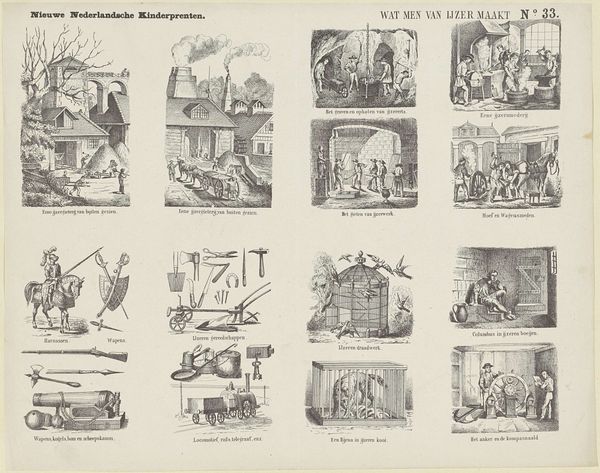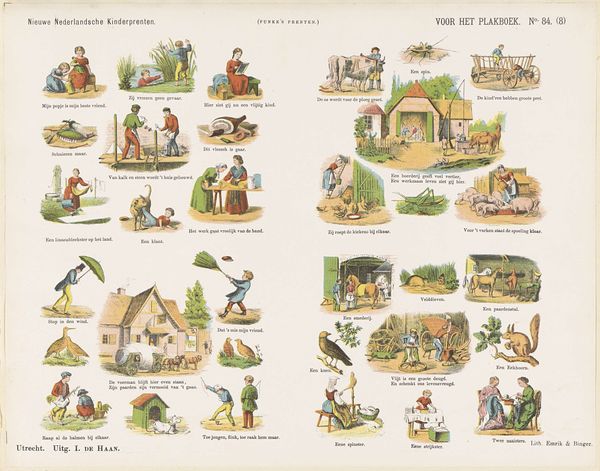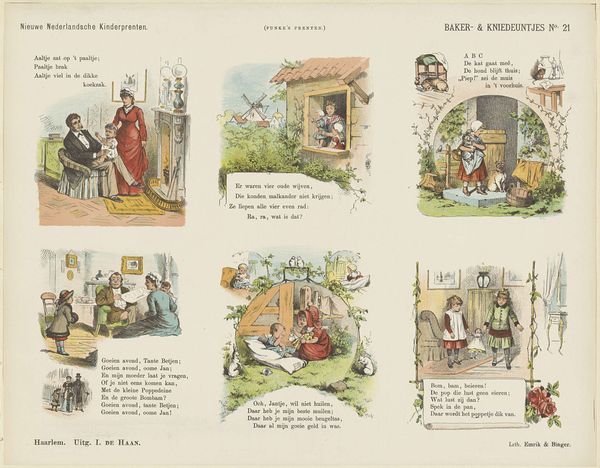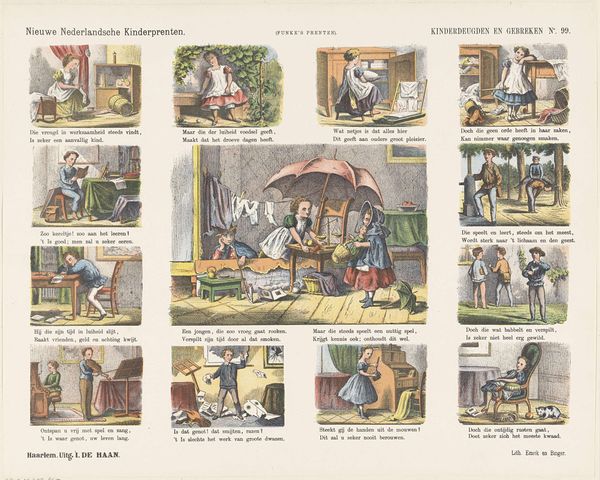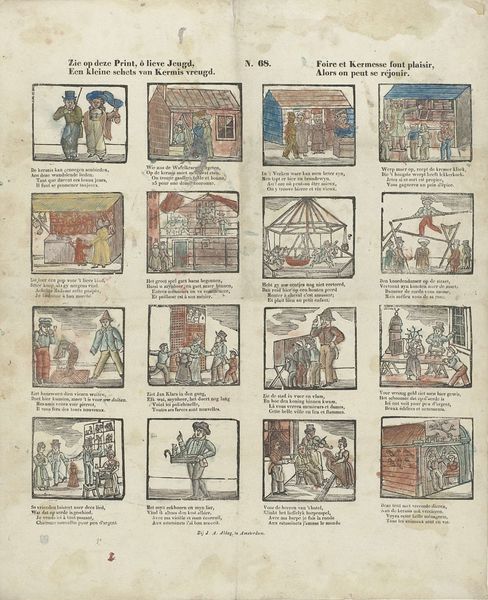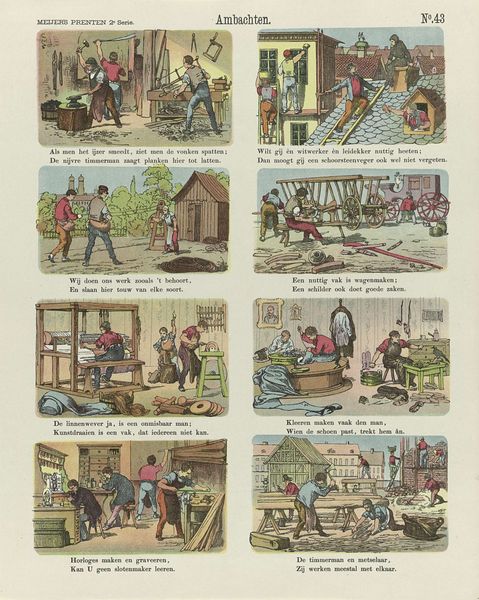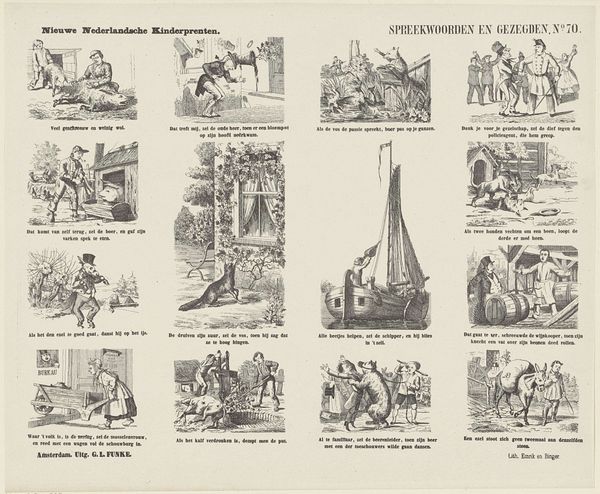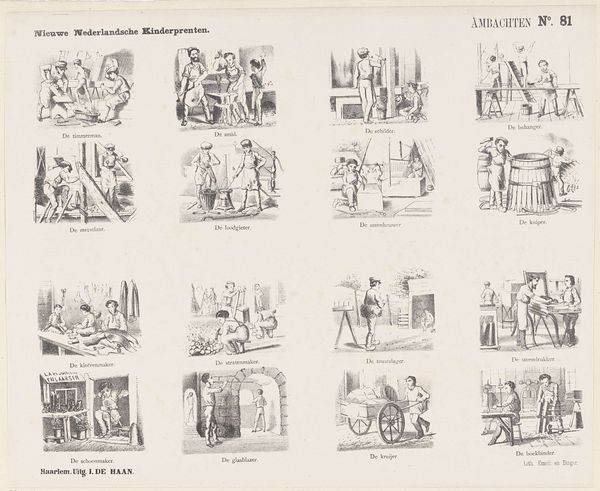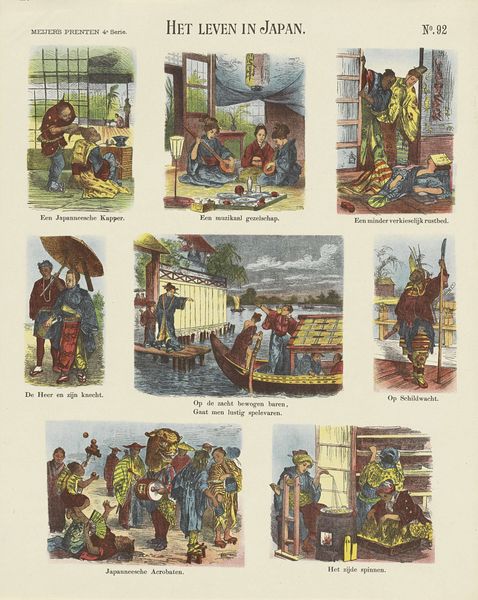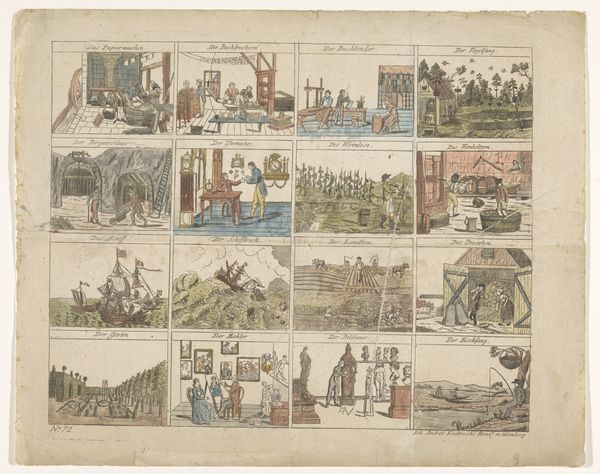
lithograph, print
#
dutch-golden-age
#
lithograph
# print
#
genre-painting
Dimensions: height 339 mm, width 426 mm
Copyright: Rijks Museum: Open Domain
Curator: Here we have "Wat men van ijzer maakt," or "What is Made of Iron," a lithograph print from somewhere between 1875 and 1903, attributed to Jan de Haan. The piece presents a collection of small, organized vignettes illustrating various ironworks and related subjects. What stands out to you initially? Editor: It’s the grid format, and that the lithograph seems intent on presenting such disparate topics uniformly, each with the same tonal value, which creates an overall sense of quaint, almost naïve optimism toward industrial processes. Curator: Precisely. Note how each scene, despite varying in subject matter, adheres to a similar spatial construction: an enclosed setting with clearly defined figures engaging with tools or iron products. Look at the scenes portraying iron mining and glassworks alongside images depicting horse-drawn carts and even weaponry; consider their compositional structure. The organization draws us in and invites comparative analysis. Editor: Yes, the layout primes us to see the ways in which iron permeates all facets of life depicted, and that also highlights the period’s changing relationship with production and labor, not merely as industry but as children's instructive material, packaged for domestic consumption. This introduces certain ethical questions about celebrating possibly exploitative labor. Curator: An insightful point! Focusing purely on its construction, observe the use of line and the chromatic restraint of the print. The hatching technique to denote shadow and volume demonstrates a keen understanding of lithographic reproduction, and creates cohesion, despite variations of texture or tone, which makes it successful in establishing its didactic intentions, too. Editor: But isn't the medium the message here? By using a reproducible and distributable print, the artist essentially democratized not only the information but also its underlying industrial narratives. The arrangement transforms individual labor actions into interconnected social symbols, reflecting society’s investment in industry and even colonial narratives, when looking at the scene featuring Christopher Columbus. Curator: A valid interpretation. We can certainly say that through Jan de Haan’s work, a convergence of aesthetics, technique, and societal reflection intertwine to create an impactful visual artifact. Editor: Agreed. This piece provides many different levels to examine society through the history of objects and labor.
Comments
No comments
Be the first to comment and join the conversation on the ultimate creative platform.
